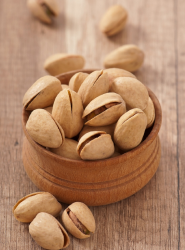Why X-Ray Inspection for Canned Food is a Non-Negotiable
From sweet corn and peas to green beans and vegetable medleys, consumers trust these products for their convenience, nutrition, and safety. However, for food processors, ensuring that every single can and jar is perfect is a monumental task.
This is where x-ray inspection for canned food emerges as an indispensable technology. It moves beyond the limitations of traditional metal detectors to provide a comprehensive, all-in-one solution for both safety and quality, ensuring every product that leaves your facility is a perfect reflection of your brand.
Detecting "Hard-to-Find" Contaminants
In the canned food industry, contamination risks are complex. While metal fragments from machinery are a known concern, the most difficult challenges often come from the raw materials themselves or the packaging.
Metal, Stone, and Glass-in-Glass
Producers of canned and bottled vegetables must be vigilant against a wide array of foreign bodies. This includes:
● Metal fragments (ferrous, non-ferrous, and stainless steel)
● Mineral stones and field debris
● Dense plastics
● Calcified bone fragments
● Glass shards, which are a critical risk in bottled products
Advanced x-ray systems are engineered to detect these dense contaminants with exceptional precision. This technology is particularly crucial for solving the "glass-in-glass" and "metal-in-metal" problems, where a contaminant is the same material as the packaging.
Precision from Top to Bottom
For products in jars and cans, the container's shape—with its curved edges, bottom concave (punt), and metal ring-pull lid—creates numerous "blind spots" for traditional single-beam inspectors. A contaminant lodged near the bottom or side of a jar can be easily missed.
This is why multi-beam X-ray inspection is a game-changer. By using multiple beams to scan the container from different angles, these systems provide 360° full coverage. This technology ensures that even the most challenging areas, like the container edges and the very bottom, are thoroughly inspected, offering especially good precision where it's needed most.
Ensuring Total Packaging Integrity
A safe product is only half the battle. Consumers judge quality by the entire package. Modern x-ray inspection systems are multi-tasking quality guardians that inspect the product and its packaging simultaneously.
Packaging Integrity: Dented Cans and Deformed Jars
A dented can or a non-standard shaped jar is not just a cosmetic issue; it can indicate a compromised seal and a potential food safety risk. AI-powered visual and X-ray systems can identify these packaging integrity flaws, such as dents and deformations, ensuring that only perfectly packaged goods proceed down the line.
Verifying Seals and Fill Levels
Maintaining product freshness and safety is vital. This includes:
● Vacuum Detection: X-ray and visual systems can inspect for sealing quality issues. This helps verify the integrity of the seal, which is critical for vacuum-sealed products with safety buttons (pop-up lids) to ensure they are functioning correctly and protecting the product.
● Fill Level Control: Inaccurate filling can lead to product waste and consumer complaints. X-ray systems precisely control filling levels, ensuring every container is consistent and compliant with label-weight regulations.
● Other Quality Checks: The system can also perform additional checks, such as identifying missing items or verifying that barcodes are present and correct.
Real-World Application: Canned Corn, Peas, and Mixed Vegetables
The principles of x-ray inspection are applied daily to some of the most common canned goods.
● For Canned Corn, Peas, Green Beans, and Other Vegetables: These products are often processed in bulk. X-ray systems are essential for removing field-level contaminants like small stones or glass fragments, as well as tiny metal shards from processing equipment.
● For Mixed Vegetables: In a product like mixed vegetables, an AI-powered optical sorteror bulk-flow x-ray system can identify and remove contaminants from the raw materials before they even get into the can. This "whole chain" approach, starting with raw material inspection, is the most effective way to guarantee a clean final product.
Frequently Asked Questions (FAQs)
1. Can X-ray systems really see through metal cans?
Yes. Modern x-ray inspection systems are specifically designed to penetrate metal can packaging. They detect contaminants by identifying density differences between the food product and a foreign object, like a piece of metal, glass, or stone.
2. What is the difference between a metal detector and an X-ray system for canned food?
A metal detector can only find metal contaminants. An x-ray inspection for canned food can find those same metal contaminants plus a wide range of non-metal contaminants like glass, stone, and bone. Furthermore, x-ray systems can simultaneously perform vital quality checks, such as monitoring fill levels, checking for damaged packaging, and ensuring seal integrity.
3. Is X-ray inspection safe for my canned vegetables?
Absolutely. The radiation levels used in food inspection are extremely low and the exposure time is minimal. This process does not affect the food's taste, texture, or nutritional value, nor does it make the food radioactive.
4. Can X-ray systems find plastic in canned food?
This can be challenging because many plastics have a density similar to the food product. However, advanced AI-powered X-ray systems can be trained to identify certain types of denser plastics and other low-density contaminants, offering significantly better detection than standard machines.
.png)

Related Articles
-
 Nov-14-2025
Nov-14-2025The Ultimate Guide to X-Ray Inspection for Yogurt and Yogurt-Based Products
Cupped products, such as Greek yogurt and multi-component flavored yogurts, present a unique set of inspection challenges. These high-value items require scrutiny for both physical hazards and commercial quality specifications.learn more -
 Nov-14-2025
Nov-14-2025How a Pistachios Optical Sorting Machine Guarantees Quality and Purity
Pistachios are a premium, high-value commodity. Consumers expect perfection in every handful—a vibrant color, a perfect split shell, and a delicious, unblemished kernel. However, for processors, achieving this level of quality at high speeds is a monumental challenge. The pistachio harvesting and shelling process inevitably introduces a wide array of defects and foreign materials.learn more -
_1.png) Nov-14-2025
Nov-14-2025Maximizing Walnut Purity: A Guide to Optical Sorting Machines
From shell fragments and septa to mold and shriveled kernels, ensuring product purity is a labor-intensive and imperfect process when done manually. This is where advanced inspection technology becomes essential. A high-performance walnuts optical sorting machine is no longer a luxury—it is a critical component for any competitive processor looking to enhance food safety, maximize yield, and protect their brand reputation.learn more

Quick Links
Contact
Tel: 717-490-1513
Add: 1050 Kreider Drive -
Suite 500, Middletown,
PA 17057







